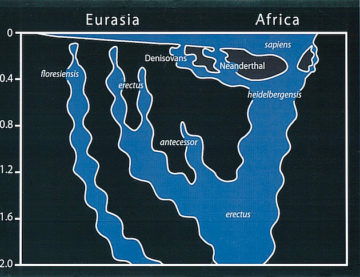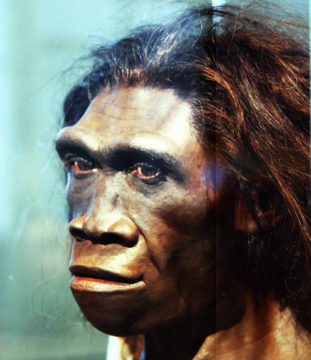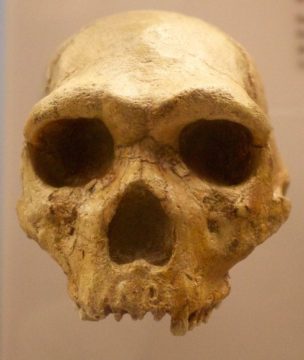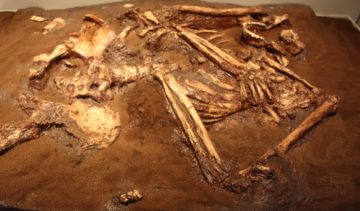by Mike Bendzela
It took a couple of million years, but any careful observer could have seen it coming.

One of the most destructive and invasive mammalian species in the world has been seen striding across the continent.
This primate was recently spotted at a watering hole in the northern territories, confirming its presence in the area for the first time.*
Until recently, the primate had penetrated only as far as the margins of the central mountains. It is believed to have originated on the eastern African continent.
Genus Homo is a bipedal, diurnal, omnivorous and predatory mammal that can survive for decades.
This new ape can form encampments on hill and in dale; in forests, prairies, or deserts; on tundra and on islands. It establishes semi-permanent colonies that feed on surrounding flora and fauna until they are depleted. Then it moves on.
Even though it produces small litters and spaces out births by years, it can go from hundreds to thousands to millions to billions of individuals in a geologically brief time.
Many characteristic traits of Homo set it apart from the other primates. Therewith, it dismantles the natural checks on its existence, one by one.

It is tailless and upright, freeing its hands to pick, pluck, tear, shred, gesture, pitch, punch, throw, and thrust.
Its arched feet and tapered stance make it adept at running down prey, stalking enemies, fleeing responsibility, and trespassing on new territories.
It is big-brained and small-jawed, endowing it with a propensity to ruminate and ruminate and ruminate.
It has a low larynx and nimble lips and tongue. With its repertoire of buzzes, moans and clicks, it forecasts the future and preserves the past in vast epics of song and falsehood.†
Its expansive, thin-boned skull houses all known paradoxes:
Fragility and ruggedness.

Genius and lunacy.
Naivete and guile.
Planning and plunder.
Ceremony and mayhem.
Tenderness and torture.
Penitence and vanity.
Sainthood and savagery.
Altruism and genocide.
It is nearly hairless yet nurses its young in the blue shadows of glaciers.
It cannot masticate raw flesh to save itself yet tracks down and butchers huge game.
It tends to eschew monogamy yet has relatively unimpressive testicles.‡

It commits its dead to the dirt while thinking rather highly of itself.§
It passes along information like fire. It leaves scorched earth in its wake.#
Those who spot it must resign themselves to the fact that it is too late to prevent.
________________
Notes
*One may think immediately of sapiens arriving in North America via the Beringia land bridge, but this sort of migration was a recurring theme in the history of Homo, including the arrival of erectus in Asia, Siberia and Southeast Asia, and heidelbergensis and neanderthalensis in the Middle East and Europe.
†It seems likely that all our Homo ancestors, not just sapiens, were speakers. It is implausible that Acheulian tool kits, big game hunting traditions, and sailing technologies endured for over a million years without the aid of some sort of language.
‡Studies have shown a proportional relationship between the size of testes in male primates and their relative tendencies toward monogamy/polygamy.
§Intentional burial of the dead goes back at least as far as neanderthalensis and perhaps as far as naledi 300,000 years ago.
#Expropriation and extinction have long been our legacy.
A newspaper article forms the template for this piece. The narrative voice may be seen as that of the rest of Creation.
Images
“File:Homo-Stammbaum, Version Stringer.jpg” by Chris Stringer is licensed under CC BY-SA 3.0.
“Homo erectus adult female – head model – Smithsonian Museum of Natural History – 2012-05-17” by Tim Evanson is licensed under CC BY-SA 2.0.
“Homo Heidelbergensis Skull” by hj_west is licensed under CC BY-SA 2.0.
“Neanderthal Burial, Cast” by Gary Lee Todd, Ph.D. is marked with CC0 1.0.
